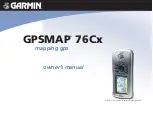
CelloTrack LTE Plus Overview
CelloTrack LTE Plus Overview.docx Page 31 of 39
Copyright © 2019 by Pointer Telocation, Ltd.
If the movement continues for more than the programmed time and the distance
from the latest known EOD location is larger than the programmed value – the
BOD is detected. The unit transmits a BOD message as well as all logged
messages.
During the trips, short stops generate stop and start events which are logged.
When movement is stopped for more than the programmed time - EOD is
detected. The unit transmits an EOD message as well as all logged messages and
keeps the EOD (destination) location for the next BOD detection.
The unit can be programmed to take locations and log the messages periodically
according to a programmable time on each trip (BOD state).
The unit also supports the entering and exiting Theft Mode (Periodic Glancing), which
can be activated by OTA command.
On Periodic Glancing the unit performs full glancing (GPS, Modem) according to the
period defined in the OTA command.
5.4
Radio-Off
The unit enters Radio-Off mode when the CelloTrack battery voltage falls below 3.4
volts for 30 consecutive seconds. When this happens, the unit initiates the following:
A Radio-Off event is generated and logged.
All log history is saved to nonvolatile memory.
The cellular modem and GNSS are turned off.
The unit does not send messages until power is resumed.
These actions ensure the integrity of the logged history and facilitate a smooth restart
when power is reapplied.
The unit exits Radio-Off mode and resumes tracking when the battery voltage exceeds
3.5 volts for 30 consecutive seconds.
5.5
Motion Detection
In CelloTrack units, Motion Detection is used to detect the unit movement; the ignition
signal is not required for asset tracking. Motion is detected via the unit’s built-in
accelerometer, which only operates when Motion Detection is enabled.
Two seconds of continuous accelerometer motion is recognized by the unit as valid
motion detection. When motion is detected continuously for a preprogrammed
duration (typically two seconds from the initial valid motion detection), the unit reports
a start event, which indicates engine-on/movement.
Two seconds of continuous lack of accelerometer motion is recognized by the unit as a
valid lack of motion detection. When lack of motion is detected continuously for a
preprogrammed duration (typically 40 seconds from the initial valid lack of motion
detection), the unit reports a stop event, which indicates end of movement.





































